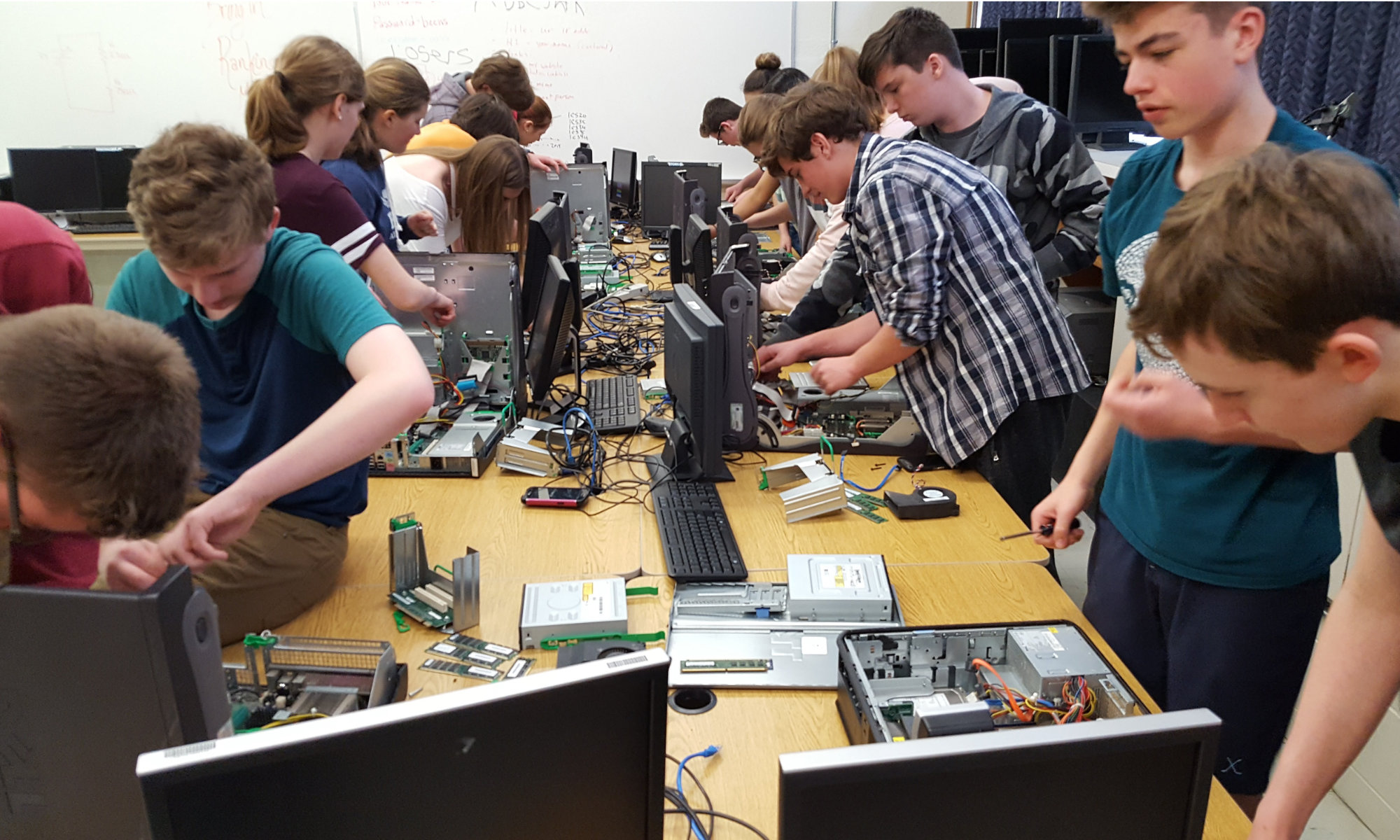Assignment
Over the semester, you will be asked to do two informal presentations related to “Cool Tech”, one each half semester. Most students will choose to present on something technological (computer hardware, software, game platforms, entertainment hardware, etc.) that is relatively new, but you may also choose something else with the permission of your instructor.
Your presentation must be centered around a Google Slides slideshow. You must submit the form to get your topic approved and prepare a short slideshow to present to the class. Be sure the title of your slideshow includes the name of the topic and the course code.
Sources of Material
- Technology Review
- Infoworld
- Wired
- The Globe and Mail: Technology
- cnet
- Tech News World
- Yahoo!
- Space.com
- Science Daily
- Google News
- The Verge
- more? email me!
Relevant Expectations
ICS3C
- D3.1 explain how emerging technologies can affect personal rights and privacy (e.g. video surveillance, cyberbullying, identity theft);
- D3.2 describe some emerging technologies and their implications for, and potential uses by, various members of society;
- D3.3 describe some of the solutions to complex problems affecting society that have been or are being developed through the use of advanced computer programming and emerging technologies (e.g., monitoring and regulating electrical supply and demand; using facial recognition programs to verify the identity of persons entering a country; analysing criminal activity by overlaying crime data on satellite imagery; analysing large-scale meteorological data to predict catastrophic storms).
ICS3U
- D2.1 demonstrate an understanding of emerging areas of research in computer science (e.g., cryptography, parallel processing, distributed computing, data mining, artificial intelligence, robotics, computer vision, image processing, human–computer interaction, security, geographic information systems [GIS]);
- D2.2 demonstrate an understanding of an area of collaborative research between computer science and another field (e.g., bioinformatics, geology, economics, linguistics, health informatics, climatology, sociology, art);
- D2.3 report on an area of research related to computer science, using an appropriate format (e.g., website, presentation software, video).
ICS4C
- D3.1 describe the evolution of some emerging programming languages;
- D3.2 investigate and report on innovations in information technology (e.g., webcasting, VoIP, multiplayer online gaming) and their potential impact on society and the economy;
- D3.3 describe programming requirements for a variety of emerging technologies (e.g., web programming, smartphones, embedded systems).
ICS4U
- D3.1 explain the impact of a variety of emerging technologies on various members of society and on societies and cultures around the world and on the economy;
- D3.2 investigate an emerging technology and produce a report using an appropriate format (e.g., technical report, website, presentation software, video).
TDJ3M
- C2.1 research and compare technological eras (e.g., agricultural, industrial, information), and describe ways in which societal needs influenced these eras;
- C2.2 research and describe cases where technological design has improved the quality of living (e.g., fireproofing, prosthetic limbs, air purifiers, catalytic converters);
- C2.3 demonstrate an understanding of ways in which history, trends, culture, and geography have inspired technological design.
TGJ4M
- C2.1 independently research and report on political, economic, cultural, and/or environmental issues that affected technological innovations in the past (e.g., traffic congestion spurred development of compact vehicles, increasing population density led to the construction of taller buildings);
- C2.2 describe examples of how culture, economics, and politics could influence the future design of products and/or processes (e.g., environmental awareness and rising costs for fossil fuels could increase the development and use of alternative energy sources);
- C2.3 describe how technological change affects society (e.g., developments in telecommunications, health care, and robotics).
TGJ2O
- C2.1 demonstrate an understanding of social standards and cultural sensitivity and use appropriate and inclusive content, images, and language in communications media productions (e.g., including people from different races, cultures, and backgrounds in media productions; portraying minority groups with respect and sensitivity; avoiding sexism, homophobia, and cultural or racial bias);
- C2.2 describe the effects of recent changes in communications technology and applications on society and the economy (e.g., effects arising from the use of devices such as cellular phones, personal digital assistants [PDAs], and portable media players and from the emergence of computer-based social networks, user-generated web content such as wikis and blogs, and easy-to-download music file formats);
- C2.3 identify emerging communications technologies and describe their potential impact on society and the economy;
- C2.4 describe legal concepts and issues relating to communications technology and media production (e.g., copyright, privacy rights, consent);
- C2.5 describe social and ethical issues relating to the use of communications technology (e.g., promotion of hatred, irresponsible use of the Internet, cyberbullying, cultural appropriation).
TIJ1O
- C2.1 describe some of the effects that technological innovations of the past have had on society (e.g., effects on health, on people’s ability to travel and communicate, on living standards, on education) and the economy (e.g., creation of new types of jobs, automation of factories);
- C2.2 describe how society is being affected today by various new and emerging technologies (e.g., electronic messaging, Global Positioning System [GPS], wireless access, hybrid vehicles, nanotechnology, biotechnology);
- C2.3 describe economic, ecological, social, and safety considerations facing consumers when they make choices between particular products or services (e.g., natural versus synthetic materials, renewable versus non-renewable resources; inexpensive products created in developing countries versus more costly products created domestically; higher-priced products with additional safety features versus less costly products without them);
- C2.4 demonstrate an understanding of, and respect for, cultural and social diversity as they develop and create various products or services (e.g., prepare foods from various countries around the world, use video or graphic images that are representative of the school population, demonstrate hairstyles from various cultures, compare traditional landscaping styles of different cultures);
- C2.5 describe how social and economic factors influence the development and use of technology (e.g., high fuel prices and safety concerns influence automotive design, rotating blackouts speed the development of energy alternatives, people’s desire to be connected with family and friends drives telephone and wireless device design).
[ teacher link ]
